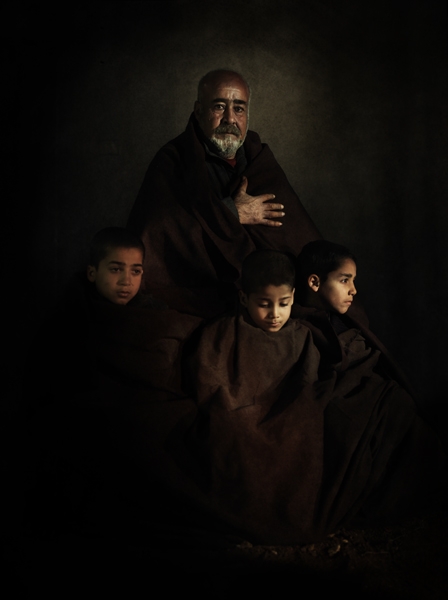 |
| Photo © Chris McGrath-All Rights Reserved |
What's a "
dokar" you ask?
Well, it's a two-wheeled horse-drawn cart found throughout Indonesia, usually decorated with colorful motifs and bells. Its small horses or ponies often have long tassels attached to their bridle. Typical
dokars have bench seating on either side, which can comfortably fit three or four persons...and luggage (and huge bags of rice).
Regretfully, the
dokars are on their way to extinction due to other more efficient and modern ways of transport. More than 200
dokars were working in Indonesia's Denpasar region, but only a handful remain these days. Denpasar -as in other large cities- experiences an uncontrolled population causing chronic traffic jams that make it difficult for the
dokar to work effectively. Cheaper motorcycles have also made the
dokar obsolete.
Chris McGrath has documented these last remaining vehicles in his
The Vanishing Dokar in lovely monochrome tones, along with copious information about the photographs as captions.
Chris McGrath is an Australian photographer with Getty Images, specializing in editorial and commercial assignments. He has photographed, four Olympic games, the Paralympics, Commonwealth games, the FIFA World Cup, the Rugby World Cup, the MLB World Series, the Super Bowl, the Daytona 500, US Open Golf, numerous US Open and Australian Open Grand Slams, the 2004 Asian Tsunami, the election of Barack Obama and the earthquake and Tsunami in Japan and the London 2012 Olympics.
He has worked for clients such as Nike, NFL, Coca-Cola, the LPGA, NASCAR and the New York Times, and his images appeared in Stern, Newsweek, Time, Sports Illustrated, The Independent, The New York Times, The Los Angeles Times, USA Today, ESPN the magazine, The Guardian, L'Equipe and on daily news and sport websites worldwide.
He currently works in Tokyo, Japan.
 The hijab is a controversial topic amongst Muslims and non-Muslims alike. While the Qur'an requests Muslim women to dress modestly, it does not specifically institute a dress code. However, most Islamic legal systems define modest dressing as covering everything except the face and hands in public. Wives of the Prophet Muhammad are said to have been hidden behind curtains from the rest of the Muslim congregation because his home was constantly visited by people. Muslim women started then to emulate this tradition by wearing veils and face covers.
The hijab is a controversial topic amongst Muslims and non-Muslims alike. While the Qur'an requests Muslim women to dress modestly, it does not specifically institute a dress code. However, most Islamic legal systems define modest dressing as covering everything except the face and hands in public. Wives of the Prophet Muhammad are said to have been hidden behind curtains from the rest of the Muslim congregation because his home was constantly visited by people. Muslim women started then to emulate this tradition by wearing veils and face covers.






